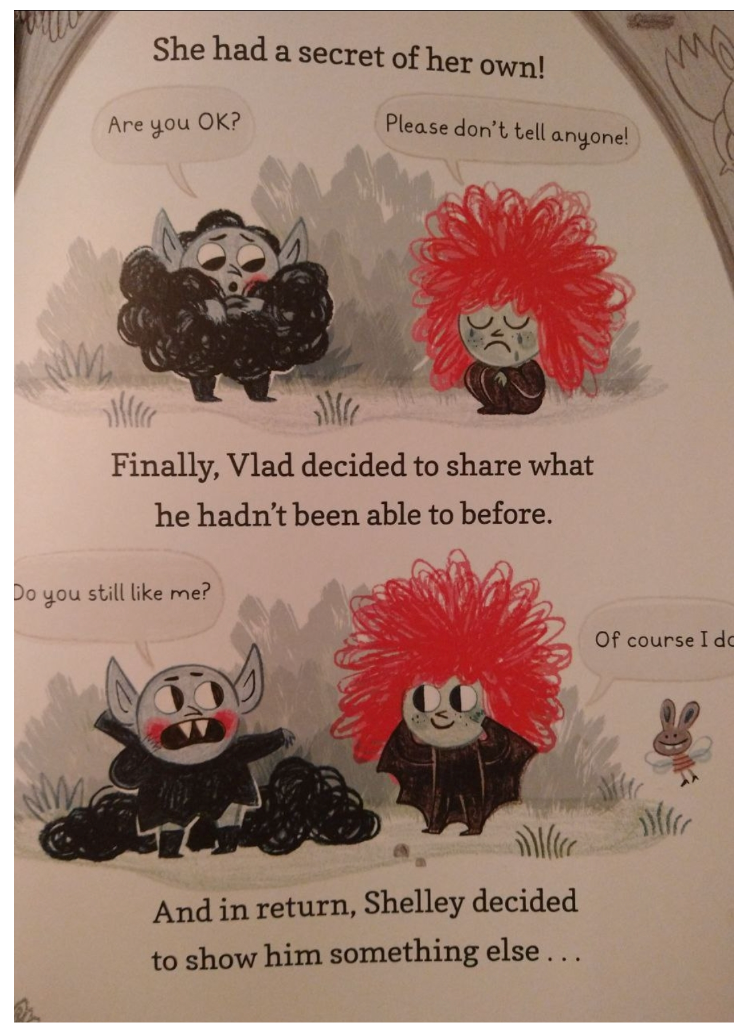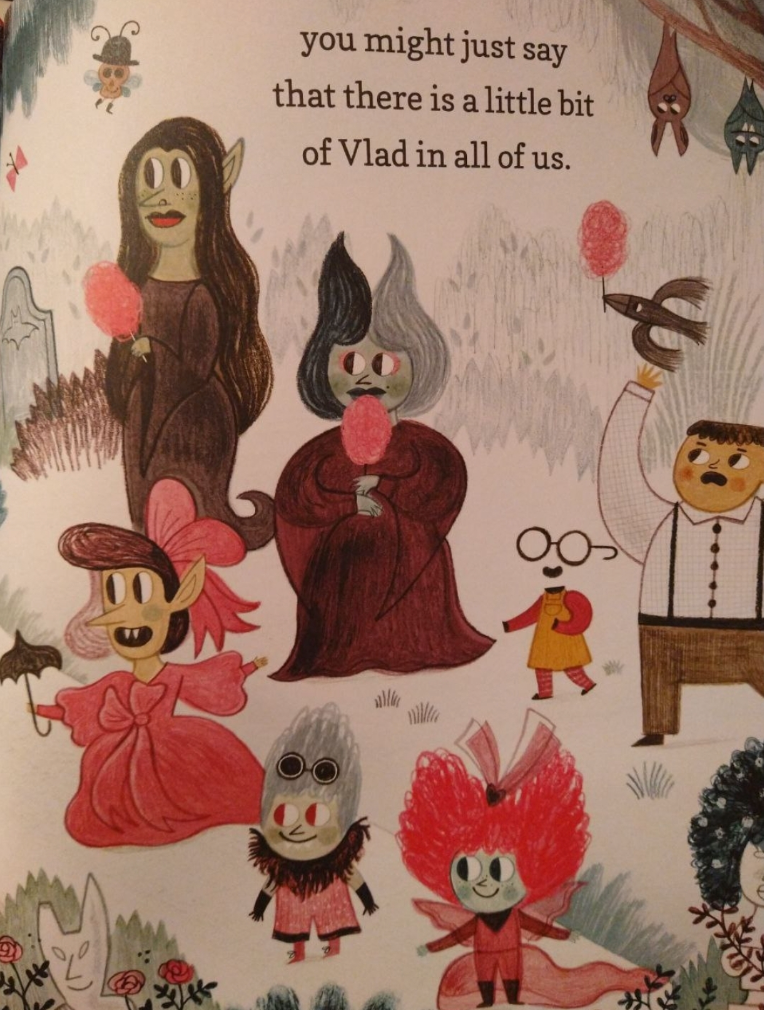Innocence Drained: How Queer Ideology's Bloodthirsty Agenda Sinks Its Fangs Into Your School Library
- Mandy
- Nov 18, 2023
- 6 min read
Updated: Nov 19, 2023
The term “covert action” often conjures images of spies lurking around corners, in bars, tailing suspects without being seen, and escaping impossible situations with specialized martial arts skills. It refers to “activities carried out in a concealed or clandestine manner, primarily to make [it] difficult, if not impossible, to trace the activities back to the sponsoring intelligence service or agency (Polmar and Allen, 1997).” Overt action, on the other hand, is traceable and completed out in the open. There’s an air of excitement when covert action is strategically displayed in thriller and spy books. When it comes to children’s books, however, covert action used to groom children is anything but exciting. There are many methods of grooming children to manipulate, exploit, and abuse them. Most adults are aware of and warn their children about the dangers of being online or staying away from strangers. When it comes to children’s books, though, parents and guardians may be unaware of the dangers lurking inside the pages.
How is this possible?
Children’s books used to be wholesome, fun, silly, innocent, and taught respect for oneself and others. Nowadays, many children’s books touted as wholesome and inclusive are actually part of a larger strategy to covertly groom a generation into following queer ideology. Queer ideology is not an identity, as many well-meaning individuals may believe. It is a cancerous political movement that has infiltrated books, television, civil rights laws, churches, and even school libraries. Currently, there is a battle between parents and school boards, parents and libraries, parents and politicians, politicians and school boards, etc., about what type of books children should be exposed to and at what age this exposure should be allowed. Most adults are genuinely concerned about inclusivity and exposing children to different cultures and religions. Their hearts are in the right place, and we recognize their good intentions. However, there is a misunderstanding about queer ideology within school books, especially when it comes to the children. In order to understand why queer ideology is not inclusive and does not belong in children’s books, we must first understand what queer theory is and why it insists on poisoning the minds of our youth. Essentially, children are tools sought to be used by queer theorists because they are viewed as “both a limit and a hope for queer theory” (Dyer, 2016). Rather than being inclusive of all people, queer theory intentionally seeks children out to groom them into “queer relationality, which breaks from the reproductive futurity of the normative classroom and nuclear family (Keenan & Mess, 2020).” Since core beliefs are formed by around age 7 (DKW, 2020), it makes sense that children’s books are purposefully used as vehicles to push this mind virus. In fact, the president of the American Library Association, Emily Drabinski, wrote a paper in 2013 called, “Queering the Catalog: Queer Theory and the Politics of Correction,” explaining the purpose of queer ideology within the library. In her paper, Drabinski makes her intentions for all libraries clear:
“Queer theory provides a useful theoretical frame for rethinking the stable, fixed categories and systems of naming that characterize library knowledge organization schemes and strategies for helping users navigate them … Lesbian and gay studies grew out of the recognition that those identities were largely absent from the historical record … Queer theory, however, argued that this recuperative approach was dangerous. It froze identities in time and universalized them, erasing the real differences that accompany same-sex sexuality on the scales of time and place … For queer theory, systems of categorization and naming are inextricable from the historical contingencies of their own production; there can be no “correct” categorical or linguistic structures, only those that discursively emerge and circulate in a particular context … For queer theory, knowledge organization structures are productive, not merely representative. They do not smoothly represent reality but discursively produce it, constituting the field of potential identities users can either claim as true and authentic representations of themselves or resist as not quite correct.”
From Drabinski's words, you can see that queer ideology is not compatible with “fixed categories” or any type of stable system. And it explicitly seeks to deconstruct these “fixed categories,” as they are considered to be oppressive. Eroding these fixed binary categories include blurring the boundaries between what makes people male or female, gay or straight, and adult or child. This is by design, since queer ideology’s roots are deeply embedded in political activism, purposefully disrupting stability (Lindsay, 2023). It attracts chaos. And that is only the tip of the iceberg. “Queer theory now includes a robust literature that rethinks and reinhabits the child with attention to its queer character (Dyer, 2016). The idea that children need to be inhabited by queer characters is covertly applied in Flavia Z. Drago’s book, Vlad the Fabulous Vampire.

The illustrations are well done and enjoyable. Also, the concept of a vampire child having anxiety over being different is appealing to a lot of parents. However, a closer inspection of the book reveals a more disturbing secret than the one Vlad is hiding: this book is covertly grooming your child into queer ideology. We never learn how or why the protagonist reacts to his problems with anxiety. We are only made aware that he is anxious about being different and has to hide his true self. Not only is he hiding who he is from his parents, but his anxiety suddenly goes away when his friend, Shelley, reveals she has a similar secret and they venture beyond the woods into a hidden place in an effort to make Vlad feel safe – a place where he can “simply be himself.”

Vlad the Fabulous Vampire covertly exploits children using manipulation among the illustrations. One of the most alarming illustrations in this book is an androgynous older male hanging out with little children. Is he an older brother? A trusted adult? Another child who simply looks older? The family butler? The baby-sitter? Unfortunately, we are never told who he is or why he is with the children. However, by the end of the book, we discover that this creepy individual is transgender and children are forced to watch his transition from beginning to end. His transition begins with crossdressing. He trades his suit for a tutu and by the end of the book, his transition is complete and he is in a flowing, pink gown and a giant hair bow. Apparently, “there is a little bit of Vlad in all of us.”

As if this was not odd enough, there is another scene that stands out above the rest. Before he fully transitions, he is seen skating with the children in his tutu. While skating, he lifts his leg high in the air, flashing the child. The boy immediately falls to the ground.

“Of course, there were lots of times
when Vlad still felt insecure.
But when he did, there was always
someone he could count on.”
The illustrations suggest to the reader that Vlad fell because he was flashed by a man in a tutu, and his discomfort in this scene is palpable. Anxiety is a learned internal feeling stemming from a cause. If a child is feeling anxious or insecure, that indicates that something happened which needs to be addressed. The messages in this book are anything but wholesome and inclusive. It desensitizes kindergartners to the idea that being flashed by grown men is excusable, instead of teaching children that they should tell a trusted adult, like a parent. This book reluctantly teaches kids that, in order to feel better about themselves, they should expect everyone who is different than them to change their worldview in order to make them feel better, all while ignoring the root cause of their anxiety.
What could have been a fun, wonderfully illustrated book providing guidance and reassurance about family, wound up being filled with covert images to groom your 3-to-7-year-old child into having their boundaries violated. The author said in an interview with Amaris Castillo, “Hopefully, they’ll identify with Vlad in one way or another—whether it’s because they feel self-conscious about their physical appearance, their identity, their nationality—about anything.” The covert messaging in Vlad the Fabulous Vampire pushes queer ideology on children whose core beliefs have not yet developed.
Kids' books ought to be enjoyable, lighthearted, and instill values of self-respect and respect for others. But beware the subtle infiltration of a sinister agenda invading school libraries cloaked as "gender identity inclusivity.” Queer ideology seeks to “destabilize [cis-normative] narratives of growth and development organized around the child-adult binary and its discursive wedge: innocence. It is a destructive force which seeks to deconstruct childhood innocence, scramble, and recircuit innocence’s energies to fashion radical political statements about identity (Mattingly, 2014)." At a time when such an aggressive agenda is actively being implemented in school libraries, society must act responsibly to protect children and families from a radical safeguarding nightmare parading itself under a distorted LGBTQIA+ umbrella.
REFERENCES
DKW. How the Brain Works: The Facts Visually Explained. Penguin Random House. New York, New York. 2020.
Drabinski, Emily, "Queering the Catalog: Queer Theory and the Politics of Correction" (2013). Brooklyn Library Faculty Publications.
Drago, Favia Z. Vlad the Fabulous Vampire. 2023 by Flavia Zorilla Drago.
Drago, Favia Z. Author Q & A: Vlad, the Fabulous Vampire by Flavia Z. Drago. Amaris Castillo. October 4, 2023. https://latinxinpublishing.com/blog/2023/9/28/author-q-amp-a-vlad-the-fabulous-vampire-by-flavia-z-drago
Dyer, H. (2016). Queer futurity and childhood innocence: Beyond the injury of development. Global Studies of Childhood, 7(3), 290-302. https://doi.org/10.1177/2043610616671056


